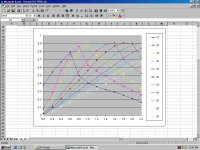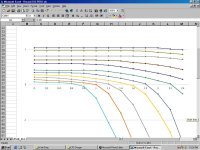aleatorylamp
Charter Member
Fewer Columns?
Hi Ivan,
With the current problem of the Giant not slowing down for landing but gliding on in idle ad-infinitum at 150 ft and 50 Kt, I´m game for trying whatever will help! I´ve increased Zero Lift drag, Induced Drag and comensated Prop Efficiency, and slowly it´s getting a little better, although RoC is a bit high now.
Do you mean reducing the number of columns and perhaps trying out the 30 degree pitch column?
Cheers,
Aleatorylamp
Hi Ivan,
With the current problem of the Giant not slowing down for landing but gliding on in idle ad-infinitum at 150 ft and 50 Kt, I´m game for trying whatever will help! I´ve increased Zero Lift drag, Induced Drag and comensated Prop Efficiency, and slowly it´s getting a little better, although RoC is a bit high now.
Do you mean reducing the number of columns and perhaps trying out the 30 degree pitch column?
Cheers,
Aleatorylamp





